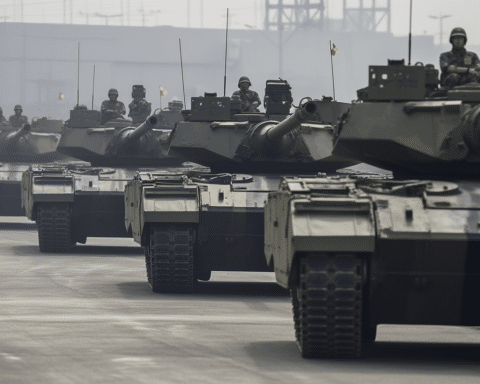In a tragic incident last November, an Osprey aircraft crash off the coast of Japan resulted in the loss of eighth Air Force Special Operations Command members. A recently released Air Force investigation has revealed that the crash was primarily caused by cracks in a metal gear and the pilot’s decision to continue flying despite multiple warnings to land.
The CV-22B Osprey crash has prompted a significant review of the aircraft’s safety record, being one of four fatal crashes involving Ospreys in the past two years. The incident has sparked a division among military services regarding the future role of this unique aircraft, which combines the capabilities of both an airplane and a helicopter.
Initially, the Air Force attributed the crash to an unprecedented component failure but did not specify the details. The investigation has now identified the failed component as a pinion gear, a crucial part of the proprotor gearbox, which acts as the aircraft’s transmission. The pinion gear failure led to a catastrophic chain reaction within the gearbox, ultimately causing the crash. Despite pinpointing the gear as the failure point, the exact reason for its failure remains unknown.
Pentagon leadership responsible for the V-22 Ospreys was aware of the potential for a total loss of the aircraft and crew should the proprotor gearbox components fail. However, the investigation found that this critical safety information was not adequately shared with the crews, which could have heightened their awareness of the risks involved.
On the day of the crash, the Osprey, piloted by Maj. Jeff Hoernemann, was flying along the coast of mainland Japan towards Okinawa when the first signs of trouble appeared. Vibrations, which are monitored as indicators of potential issues, were detected on the left side of the driveshaft that links the two engines. This data, however, could only be downloaded after the flight, leaving the crew unaware of the problem in real-time.
Following the initial vibration, the left proprotor gearbox started showing signs of distress. The first chip burn warning, indicating metal flakes in the gearbox oil, appeared in the cockpit. Such warnings are relatively common in rotary flight, and the Osprey is equipped with a chip detector designed to burn off these metal flakes. However, over the course of the flight, the crew received six chip warnings, each signaling an opportunity to land as a precaution.
Despite the warnings, Maj. Hoernemann chose to continue the flight, balancing his mission objectives with the aircraft’s evolving situation. Official guidance recommends landing as soon as practical after three chip burns, but the decision was left to the pilot’s discretion. Hoernemann, focused on completing the military exercise, elected to continue the 300-nautical-mile journey over water.
As the flight progressed, the situation deteriorated. After the third chip burn warning, the crew was just 10 miles from the nearest airfield on mainland Japan but opted to keep flying. They received additional chip burn warnings, which escalated the situation to a “land as soon as possible” directive. However, the crew did not act with the required urgency.
In the final minutes, the Osprey approached an airfield at Yakushima, but Japanese air traffic controllers instructed them to hold for local traffic to take off. Despite acknowledging an in-flight emergency, the crew waited. The final warning, a chip detector fail, occurred three minutes before the crash. The detector had accumulated so many chips it could no longer function, leading Maj. Hoernemann to incorrectly assume the earlier warnings were false.
As the left proprotor gearbox failed completely, catastrophic destruction spread through the Osprey’s gearing system. The aircraft rolled violently, inverted twice, and crashed into the water, killing all on board.
In response to the crash, new directives have been issued. Crews must now land as soon as practical after the first chip burn warning and as soon as possible following the second warning. Additionally, efforts are underway to develop a system that communicates real-time vibration data to pilots, enhancing their awareness during flights.
The victims of this tragic crash were Maj. Eric V. Spendlove, Maj. Luke A. Unrath, Capt. Terrell K. Brayman, Tech. Sgt. Zachary E. Lavoy, Staff Sgt. Jake M. Turnage, Senior Airman Brian K. Johnson, Staff Sgt. Jacob M. Galliher, and Maj. Jeff Hoernemann. This incident underscores the critical need for improved safety measures and communication within the military aviation community.




